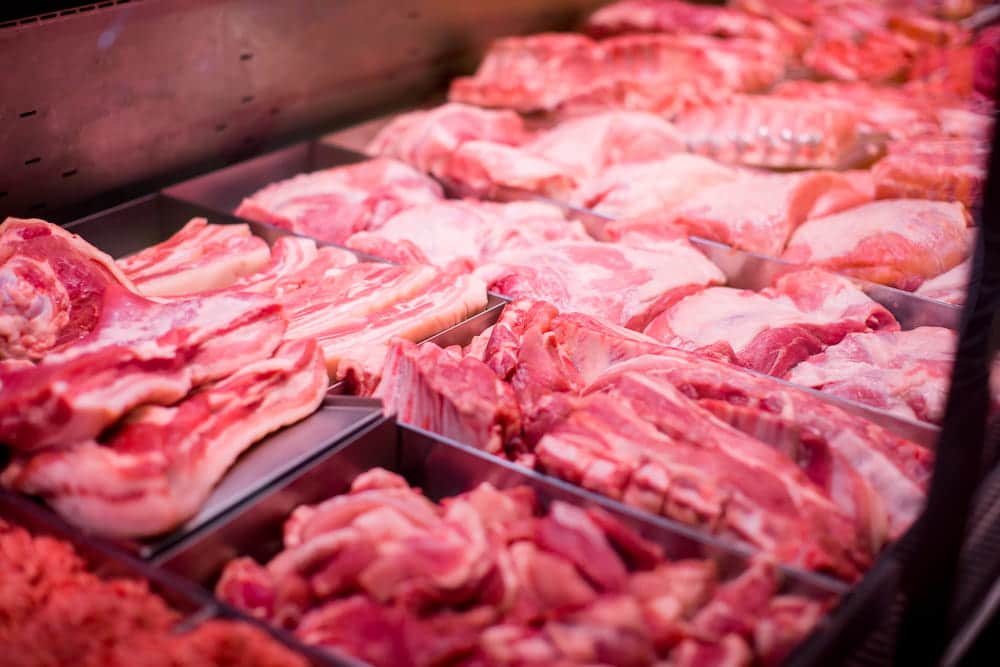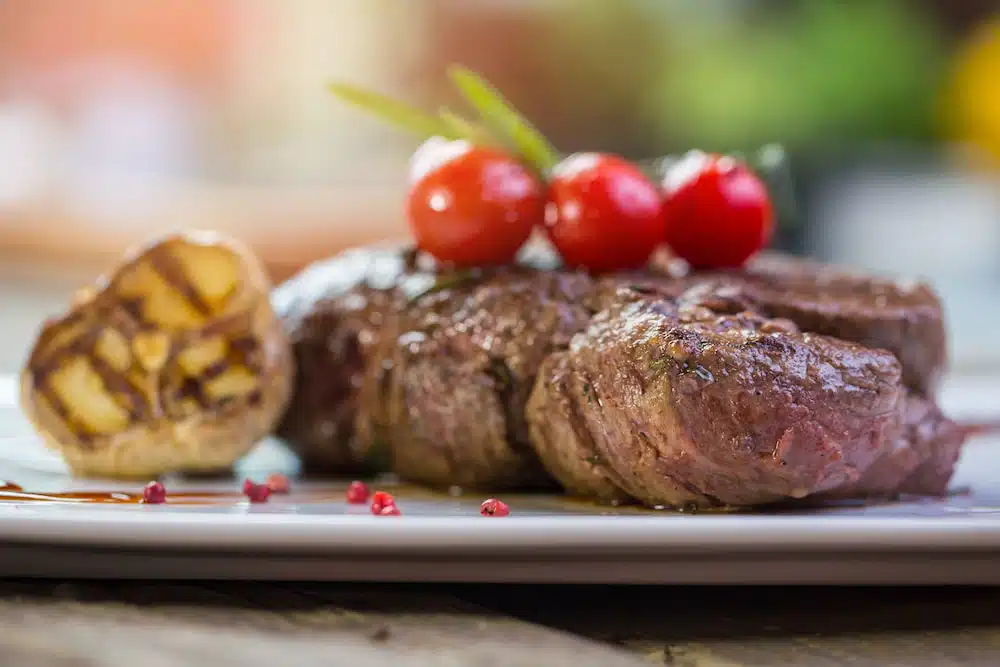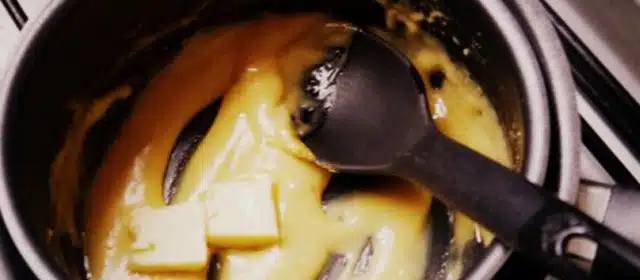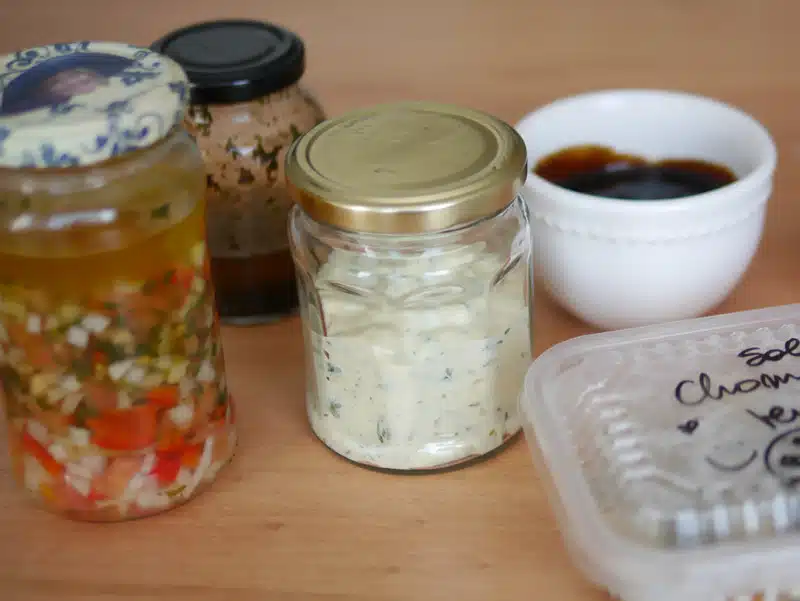Hello friends of Paulina Cocina! Today we're going to enter the realm of discussion for grillers, barbecuers, and cooks, but also for diners. We're going to talk about the points of meat.
Because who hasn't had that little debate about "I like it juicy" or "please give it to me well done"? If you've ever been cooking and don't know how to achieve the different cooking points for meat , we've got this guide to help you learn how.
Let's review what each point means, from the juicy " bleu " to the famous " well done ," and we'll also tell you some secrets to identify and carry out each of the types of meat cooking.
Content table
About the meat points
Before diving headfirst into the grill, let's pause to break this down a bit and understand what the "ripe" (cooked) meat is . In short, it's the degree of doneness that the meat reaches depending on how long it's left on the grill. As the meat cooks, it changes color, texture, and flavor. But be careful, it's not just about time; the cook's eye also comes into play, and of course, practice makes perfect.
The juiciness, color, and consistency of meat change as it cooks. For the more technically inclined, this has to do with how the meat's proteins react to heat. But while no one is particularly interested in knowing what happens to proteins when we're hungry, it's essential to know that each of the meat's ingredients has its own magic .
How do you know how cooked your meat is?
There are several methods to determine the different points of the meat , but two of the most common are:
- The Thumb Trick : This old-school compares the texture of the meat to that of your hand. The stiffer your thumb muscle is as you touch the tip of your thumb to your fingers, the more cooked the meat is . Each pressure simulates a different point on the meat.
- Cooking thermometer : For a more accurate reading (and less painful than touching hot meat), you can use a thermometer. For medium-well meat , it should be around 45°C (113°F), for tender meat, between 50°C and 55°C (122°F), medium 60°C (140°F), and well-done meat should be around 70°C (157°F).
Characteristics of meat cooking types
- Medium-rare beef: This is a favorite for those looking for a balance between juiciness and doneness . Medium-rare beef has a pink center, with slightly more cooked edges. It's juicy, but not oozing. Medium-rare beef is ideal for those who don't want too much or too little.
- Medium: Similar to medium-rare, but slightly more cooked. The pink is still present, but it begins to fade toward the edges. Here, the balance between flavor and texture is key . The meat is still tender and succulent, but with slightly more bite resistance. The best part? It's perfect for most cuts .
- Well-done beef: The classic of classics for those who don't want even a trace of juice on their plate. It's the most extreme of the beef, completely brown in the center with a firmer texture and a more concentrated flavor due to prolonged cooking.
Tips and tricks for achieving the right cooking points for meat
- Resting is key : Don't rush to cut the meat as soon as it comes off the grill or griddle. Let it rest for a few minutes so the juices redistribute and don't escape when you first cut it. This is essential for achieving the best quality meat .
- Medium heat : To properly control cooking and prevent the meat from burning on the outside and remaining raw on the inside, medium heat is a key. Maintaining a constant temperature is key to proper cooking .
- Cooking Times : The amount of time the meat spends on the heat depends on the thickness of the cut . But a general rule for different types of meat is about 2 to 3 minutes per side for rare , 4 to 5 minutes for medium, 6 to 7 minutes for medium , and so on.
The art of handling cooking points
Achieving meat is not just a matter of technique, but also of understanding the tastes of those who will be enjoying the roast or the meal. From rare to well-done, each meat has its place and its fan.
With practice, patience, and attention to detail, anyone can master the art of perfect cooking . So, the next time you're at the grill or stove, you'll know how to handle the rareness of your meat so everyone is happy.
Follow on Instagram ( here )
and on YouTube that I upload new recipes every week ( click here )

The 5 points of meat: one for each taste
Now, let's get down to business. Or rather, to the point. There are five terms commonly used to define different types of meat cooking . Let's review each one so that the next time you're grilling, you'll know exactly what you're doing:
- Bleu or rare meat : For the brave, lovers of meat that practically walks on the grill. It cooks for just a few minutes on each side, remaining red and cold in the center . This is the first of the meat's rareness points.
- Juicy : Here we're talking about a slightly longer cooking time. The meat is still red, but piping hot inside. This is one of the most popular types of meat.
- Medium : The perfect balance for those undecided. The meat is pink inside, with a medium level of juiciness. One of the most sought-after tenderness levels.
- Three-quarters : We're almost cooked. The meat is almost drained of juice, with only a slight pink hue in the center. This is one of the most controversial points of the meat , due to its difficulty.
- Well-done : For those who don't want any risks or surprises. The meat is completely brown , with no trace of pink or juice. This is the most extreme doneness of the meat.
What is called “The point of the roast”
When we talk about the point of the grill , we enter a field that generates long conversations, debates, and more than one intervention from the "expert griller" on duty.
- In reality, when we say that meat is "done" in an Argentine asado , we're referring to that perfect balance between juiciness and cooking that makes the bite tender and full of flavor . Without a doubt, this is one of the most appreciated points of meat in a good asado.
The roast is a balance between medium and three-quarters done. On the outside, the meat is golden brown and crispy, and on the inside, it has a slight pinkish hue that's still juicy, but not overly so.
- To achieve this point, it is key to cook over medium and constant heat , so as not to snatch the exterior and leave the interior raw.
But it's important to keep in mind that not all cuts are created equal when it comes to cooking. To achieve perfect doneness, it's important to know that thicker cuts, such as ribeye steak or rump steak (picaña) , require more cooking time, while thinner cuts, such as flank steak or skirt steak (arrachera) , require less time to reach perfection.
What is the term 3/4 in meat?
This is the famous point where more than one person raises an eyebrow at the table. The 3/4 point is when the meat is practically cooked, but still has a slight pink hue in the center. Here, the juiciness begins to decrease considerably, but it remains one of the favorite points for those who don't like too much juice.
A surefire trick to know if you've reached the 3/4 mark is to gently press the meat with your finger (it'll burn a little, but it's worth it). If you feel medium resistance and a little tenderness in the center, then you've reached one of the best spots for the meat. It never fails.





